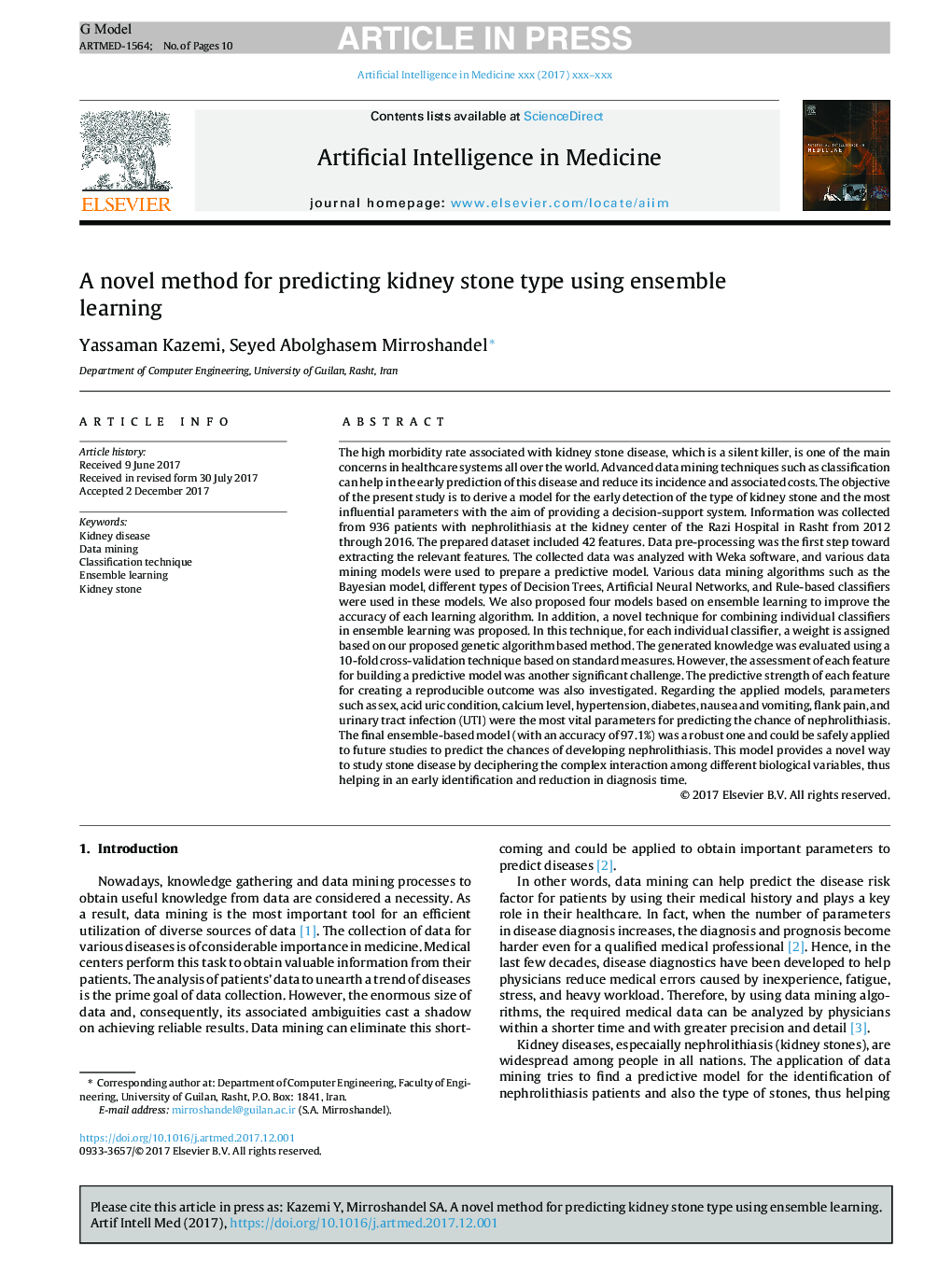| کد مقاله | کد نشریه | سال انتشار | مقاله انگلیسی | نسخه تمام متن |
|---|---|---|---|---|
| 6853367 | 1437154 | 2018 | 10 صفحه PDF | دانلود رایگان |
عنوان انگلیسی مقاله ISI
A novel method for predicting kidney stone type using ensemble learning
ترجمه فارسی عنوان
یک روش جدید برای پیش بینی نوع سنگ کلیه با استفاده از یادگیری گروهی
دانلود مقاله + سفارش ترجمه
دانلود مقاله ISI انگلیسی
رایگان برای ایرانیان
کلمات کلیدی
بیماری کلیوی، داده کاوی، روش طبقه بندی، یادگیری گروهی سنگ کلیه،
موضوعات مرتبط
مهندسی و علوم پایه
مهندسی کامپیوتر
هوش مصنوعی
چکیده انگلیسی
The high morbidity rate associated with kidney stone disease, which is a silent killer, is one of the main concerns in healthcare systems all over the world. Advanced data mining techniques such as classification can help in the early prediction of this disease and reduce its incidence and associated costs. The objective of the present study is to derive a model for the early detection of the type of kidney stone and the most influential parameters with the aim of providing a decision-support system. Information was collected from 936 patients with nephrolithiasis at the kidney center of the Razi Hospital in Rasht from 2012 through 2016. The prepared dataset included 42 features. Data pre-processing was the first step toward extracting the relevant features. The collected data was analyzed with Weka software, and various data mining models were used to prepare a predictive model. Various data mining algorithms such as the Bayesian model, different types of Decision Trees, Artificial Neural Networks, and Rule-based classifiers were used in these models. We also proposed four models based on ensemble learning to improve the accuracy of each learning algorithm. In addition, a novel technique for combining individual classifiers in ensemble learning was proposed. In this technique, for each individual classifier, a weight is assigned based on our proposed genetic algorithm based method. The generated knowledge was evaluated using a 10-fold cross-validation technique based on standard measures. However, the assessment of each feature for building a predictive model was another significant challenge. The predictive strength of each feature for creating a reproducible outcome was also investigated. Regarding the applied models, parameters such as sex, acid uric condition, calcium level, hypertension, diabetes, nausea and vomiting, flank pain, and urinary tract infection (UTI) were the most vital parameters for predicting the chance of nephrolithiasis. The final ensemble-based model (with an accuracy of 97.1%) was a robust one and could be safely applied to future studies to predict the chances of developing nephrolithiasis. This model provides a novel way to study stone disease by deciphering the complex interaction among different biological variables, thus helping in an early identification and reduction in diagnosis time.
ناشر
Database: Elsevier - ScienceDirect (ساینس دایرکت)
Journal: Artificial Intelligence in Medicine - Volume 84, January 2018, Pages 117-126
Journal: Artificial Intelligence in Medicine - Volume 84, January 2018, Pages 117-126
نویسندگان
Yassaman Kazemi, Seyed Abolghasem Mirroshandel,
